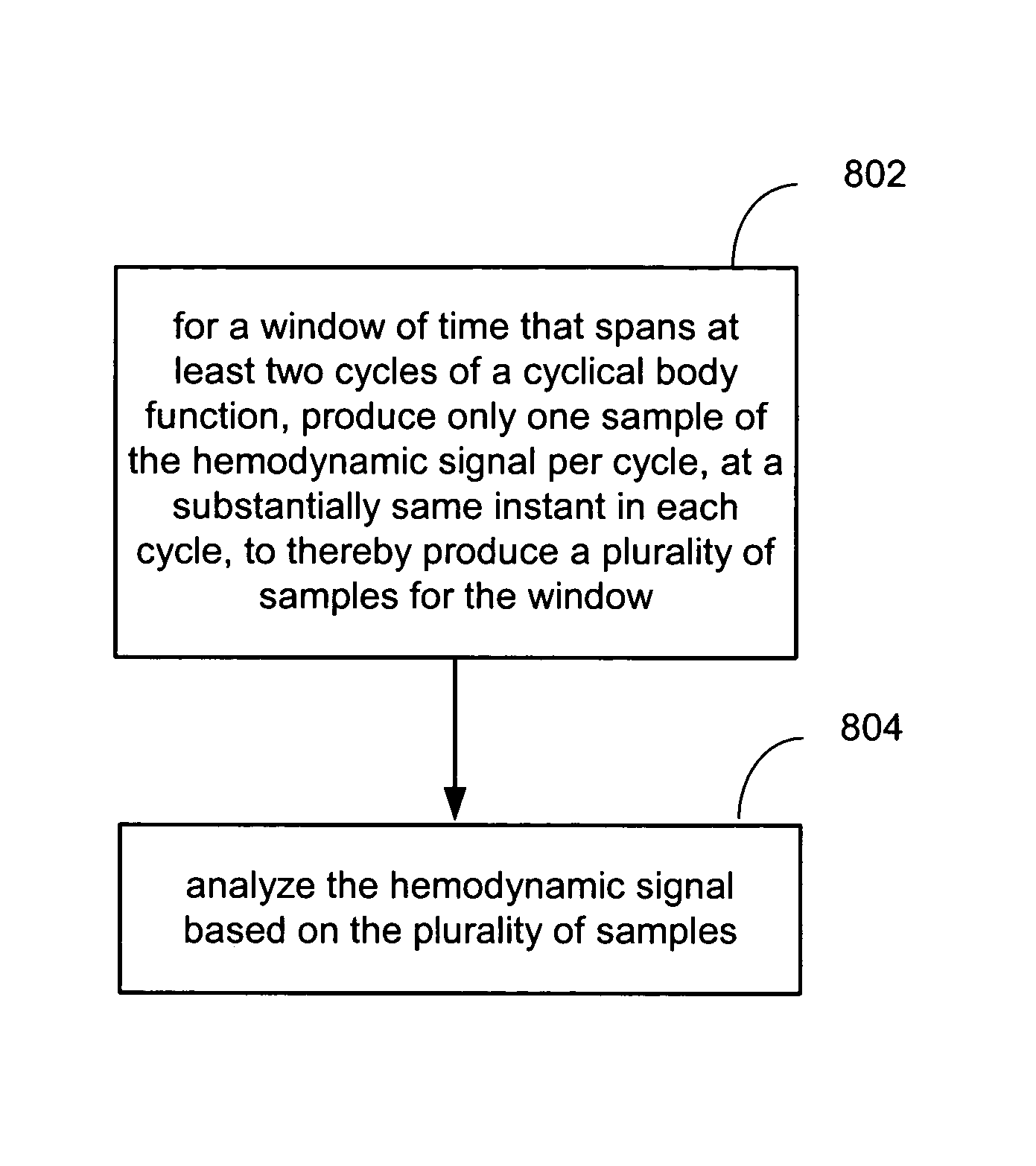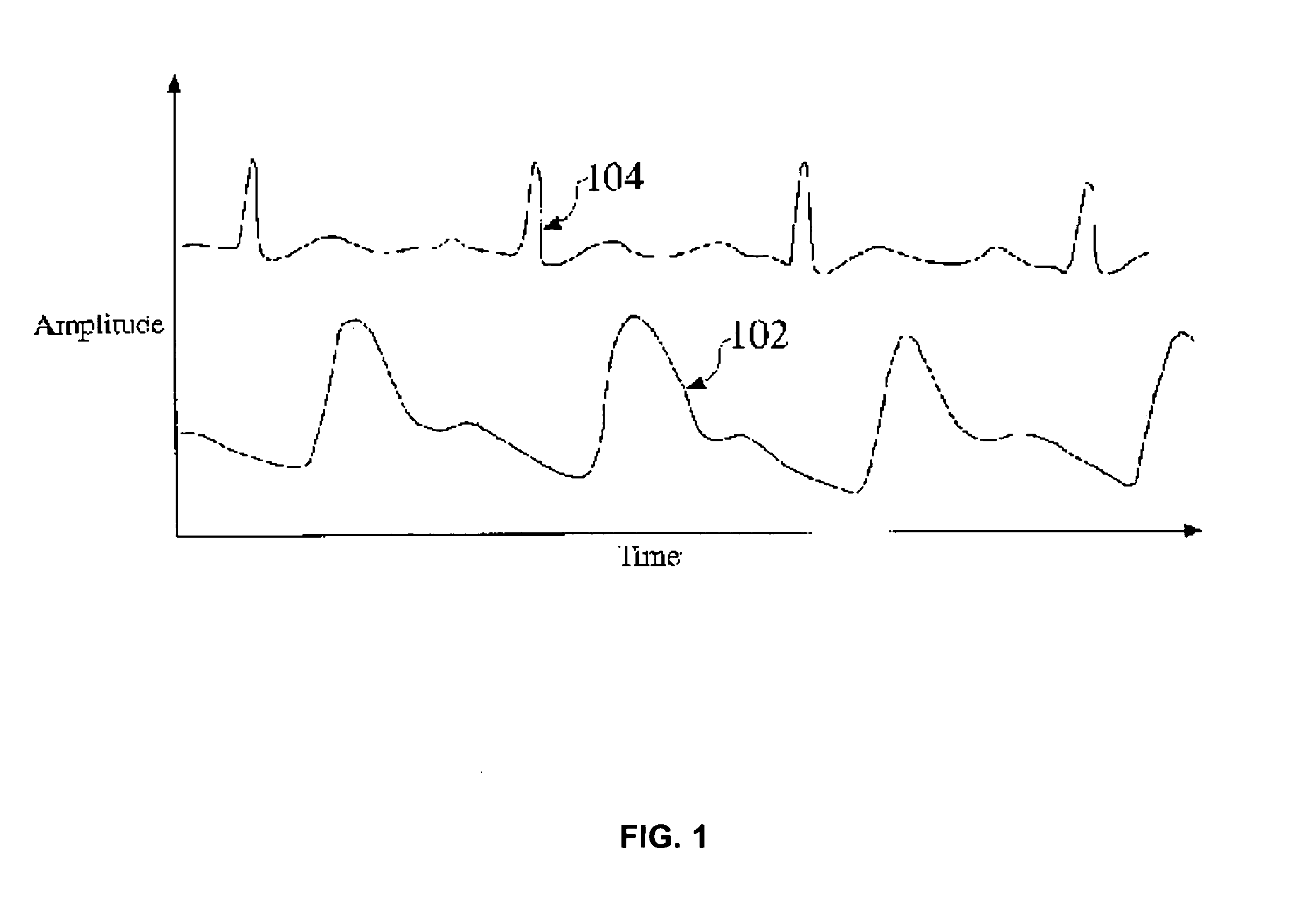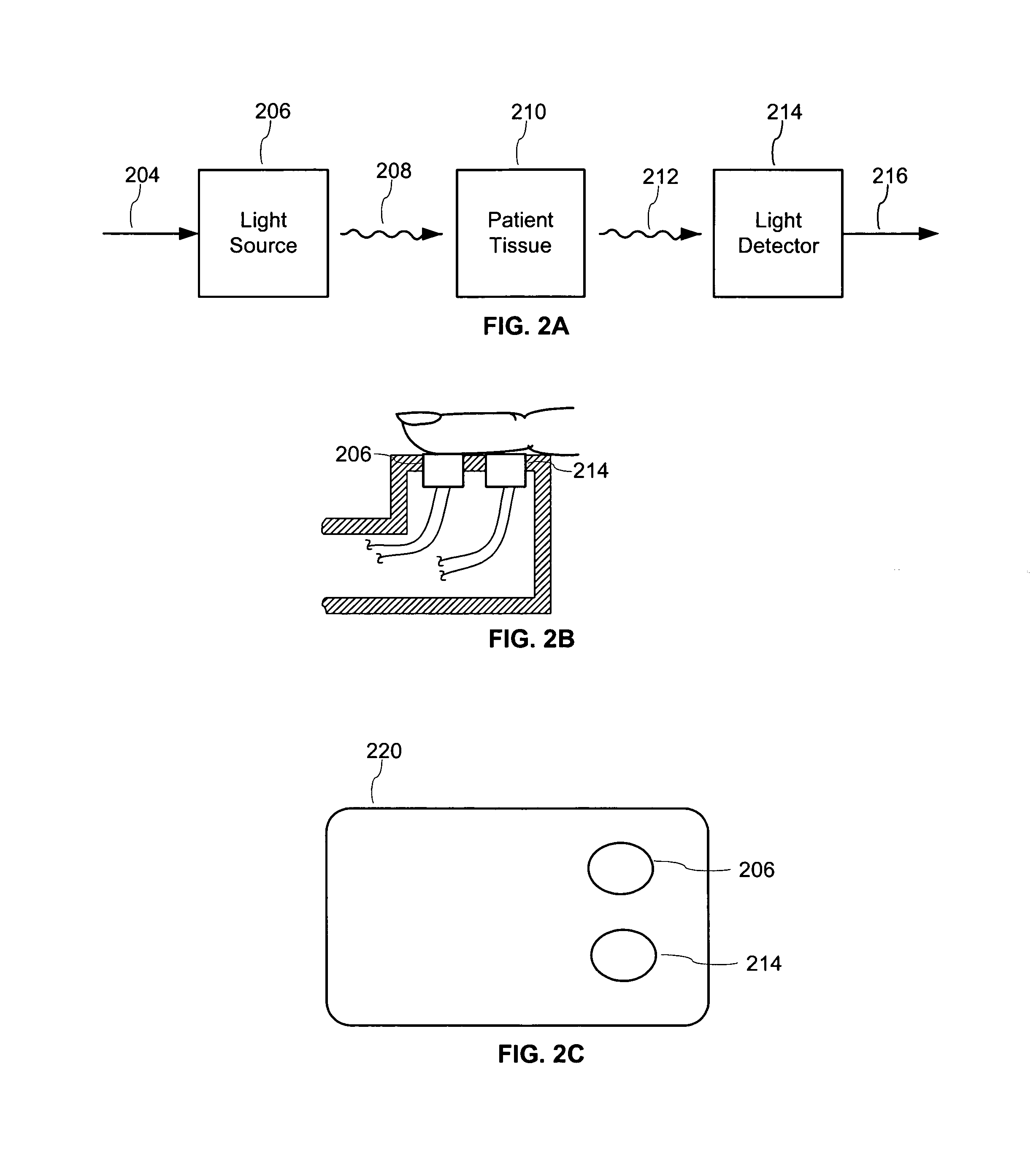Reducing data acquisition, power and processing for photoplethysmography and other applications
a technology of photoplethysmography and data acquisition, applied in the field of reducing data acquisition, power and processing for photoplethysmography and other applications, can solve the problems of relatively high sampling rate and relatively intensive filtering, and achieve the effect of reducing the amount of data, processing and/or power
- Summary
- Abstract
- Description
- Claims
- Application Information
AI Technical Summary
Benefits of technology
Problems solved by technology
Method used
Image
Examples
Embodiment Construction
Exemplary Photoplethysmography Sensors
[0045]As mentioned above, a PPG sensor includes a light source and a light detector. FIGS. 3A and 3B illustrate exemplary light sources for use in the embodiments of the present invention. Referring first to FIG. 3A, exemplary light source 206 includes a single LED that produces light signal 208. The LED can be, for example, a model L53SRC / F red LED, or a model L53F3C infrared LED, both manufactured by Kingbright Corporation, City of Industry, Calif. Referring to FIG. 3B, a series of LEDs (e.g., LED1 and LED2) can be used to increase the amount of optical power in light signal 208. Separate LEDs can be used. Alternatively, dual emitter combination LEDs can be used, such as model DLED-660 / 905-LL5-2, manufactured by UDT Sensors, Inc., Hawthorne, Calif. In accordance with an embodiment, a pair of separately driven LEDs are used, where one of the LEDs is a red LED and the other is an infrared LED (which can be a near infrared LED), collectively allo...
PUM
 Login to View More
Login to View More Abstract
Description
Claims
Application Information
 Login to View More
Login to View More - R&D
- Intellectual Property
- Life Sciences
- Materials
- Tech Scout
- Unparalleled Data Quality
- Higher Quality Content
- 60% Fewer Hallucinations
Browse by: Latest US Patents, China's latest patents, Technical Efficacy Thesaurus, Application Domain, Technology Topic, Popular Technical Reports.
© 2025 PatSnap. All rights reserved.Legal|Privacy policy|Modern Slavery Act Transparency Statement|Sitemap|About US| Contact US: help@patsnap.com



